Even 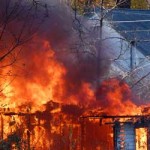 a small fire can cause extensive smoke damage. For best results and to avoid difficult stains, you should try to remove smoke char and soot as quickly as possible. The methods below are safe to use on most walls (painted, drywall, plaster, wallpapered), but you should always test a cleaning solution in a small hidden area first to look for any adverse reaction. Here’s what you need to know to get started.
a small fire can cause extensive smoke damage. For best results and to avoid difficult stains, you should try to remove smoke char and soot as quickly as possible. The methods below are safe to use on most walls (painted, drywall, plaster, wallpapered), but you should always test a cleaning solution in a small hidden area first to look for any adverse reaction. Here’s what you need to know to get started.
Removing Char & Soot from Walls
Smoke particles, commonly referred to as char or soot, will smudge if you are not careful when you try to clean them. Fortunately, there is an easy way to get rid of char and soot without causing further damage to your walls.
What You Will Need:
- Rubber gloves
- Safety glasses
- Chemical Dry-Cleaning Sponge
- Paint thinner or rubbing alcohol
- Soft cloth or sponge
- Fan, to help with ventilation
- Ladder or step stool
- Drop cloth
The Cleaning Process:
- Start by properly ventilating the area. With harsh fumes from smoke and cleaning products, you will need ample air circulation with a fresh air source readily available.
- Use safety goggles, especially when working overhead. Rubber gloves will protect your hands from cleaning chemicals.
- To avoid transferring the stain to the floor, lay a drop cloth on the floor under the area to be cleaned.
- Use a ladder or step stool to reach high areas, and work from side to side and top to bottom.
- A Chemical Dry Cleaning Sponge is the ideal way to remove soot from walls. To use, wipe the stain with the completely dry sponge – no moisture is necessary. When the sponge becomes saturated with soot, wash it out and allow to air dry. (These sponges can be found in art supply stores or in the wallpaper section of most hardware stores. If you can not find one of these sponges, skip to the next step) .
- After removing as much residue as possible, wet a soft cloth or sponge with paint thinner or rubbing alcohol. (Do NOT use water based cleaners!) Remember to test the cleaner in a hiddenn area first, then if safe, gently wipe the remaining stain until gone.
- Allow to air dry.
Removing Odors from Walls:
Because smoke will quickly spread and penetrate multiple surfaces, odors can be particularly hard to find and remove. Even without obvious smoke damage, walls can absorb smoke odor and leach it back into the room. Therefore, it is a good idea to clean walls after exposure to smoke, even if they don’t appear smoky or dirty.
What You Will Need:
- Plastic drop cloths
- Mild detergent
- Warm water
- Bucket
- Sponge or soft cloth
- Dry towel
- Ladder or step stool
The Cleaning Process:
- Begin by placing plastic sheeting around the base of the walls to avoid accidental water damage to flooring.
- Use a ladder or step stool to reach the upper wall. Start at the top and move from side to side and top to bottom as you work.
- Fill the bucket with warm water and add just enough detergent to create a few bubbles (using too much detergent will leave residue on walls).
- Wipe down the walls with soapy water using a soft cloth or sponge. (Do NOT use water on a soot-stained wall. Complete the soot and char removal process before moving on to this step).
- Soak up extra moisture with the towel to prevent water damage.
- Allow walls to air dry in a well ventilated room.
Additional Tips and Advice:
- Avoid using water-based cleaners to remove soot from plaster. This causes the stain to bleed into the wall.
- Open windows and use fans for ventilation in smoke damaged areas or any time that you work with harsh chemical fumes.
- Always use safety glasses and gloves when working with chemicals.
- Spot clean a small section of wall when you are using chemicals to test for damage.
- Replace air filters for the heating and cooling system. Even if the fire was in another room, smoke particles can continue to circulate through contaminated filters and air systems.
- If you plan to make an insurance claim, contact your insurance company before beginning the cleaning process. If you cannot wait, be sure to document the damage as thoroughly as possible with photographs.
- If the smoke damage is adjacent to an area with structural damage, wait for a safety inspection before re-entering the building.
- For extensive smoke damage, it’s best to call a professional fire restoration service.


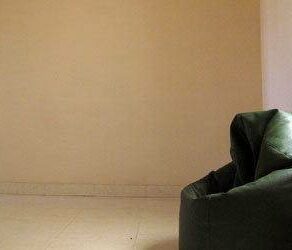
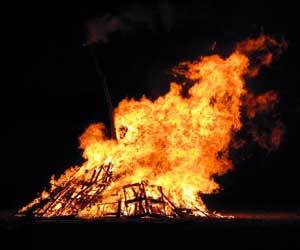
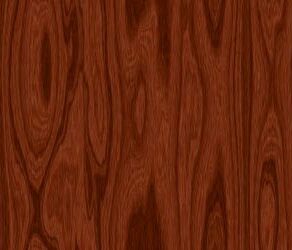
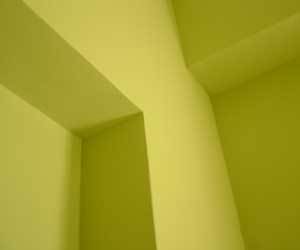
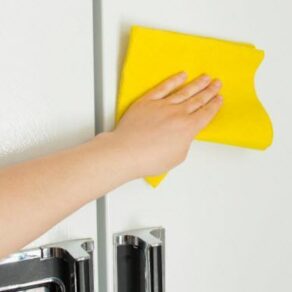


I had a small fire in my thermostat which flared up a few feet on the wall. I used rubbing alcohol and the soot stain is almost entirely gone! I was very pleased with the results.
My in-laws burn wood all year long, and sometimes oil too. All the walls are covered with soot. Washing them gets a lot out, but they still are terribly smudged and sooty.
Have to clean a ceiling which has been painted with acrylic; the ceiling is originally white. Soot damage was caused from an oil fire on the stove. Any advice? Thanks.
How do I get rid of the black smoke damage to the ceilings?
Sarah,
Use TSP (trisodium phosphate – available at most hardware stores) on a sponge to wipe and scrub away the smoke damage, then wipe the ceiling with clean wet cloth.
Source: HowToCleanStuff.net – How to Clean Smoke Damage
How do you clean a smoke damaged ceiling when there is acoustic snow sprayed on it? Do I have to scrape the whole ceiling and just paint after cleaning? Please help. The insurance company is being cheap! So, I gotta do the work for my family…
Scotty,
Ceiling popcorn (snow) is extremely absorbent and could have absorbed the smoke. If the ceiling is damaged enough from the smoke (use your best judgement), the popcorn does need to be removed. However, you first need to determine if the popcorn ceiling was installed before 1990, because if so, it needs to be tested for asbestos before you start brushing or scraping it.
The How to Clean Ceilings article says that to clean smoke damage, “Begin by briskly brushing the smoke stain with a stiff brush. Be sure to remove all loose material.” If the stain is small or light, you can try brushing or vacuuming the area first, clean the area, and move on to scraping the ceiling only if you determine that is needed. You also can scrape off the popcorn and patch the area with the stain rather than redo the entire ceiling if the stain is small or in a localized area. If anyone in your family has allergies, I would definitely recommend that you scrape off the popcorn. Once you have scraped off the popcorn and restored the ceiling, you can use a plastic bag or sponge to create a textured appearance with paint instead of reapplying the popcorn.
Source: wikiHow – How to Clean Smoke Off of a Ceiling
Source: HowToCleanStuff.net – How to Clean Ceilings
Source: eHow – The Best Way to Clean a Popcorn Ceiling
Source: Yahoo! – Top Reasons for Removing Popcorn Ceilings
Source: 100uses – Plastic Bag Paint Texturizer
Hello,
I am an African man and used kerosene as cooking fuel since gas is expensive. Please; I need someone to tell me the name of a friendly chemical to be used to remove soot at the back of the pot without stress. If dry cleaning is possible, please just give out the idea. The entire population of African women will be very grateful because they are tired of scrubbing!
I used alcohol. It has taken the paint off of my wall. Bad advice.
I plan on re-painting so for me, the use of rubbing alcohol worked great.
I just had a grease fire and I need to know how to clean soot up. My landlord isn’t helpful at all and my insurance company is taking their time. It’s been a week. I haven’t stayed in my apartment for a week. I see that no one is trying to be any help. So I’m trying to figure out how to clean it up myself. I need something simple and fast working.
Kee,
There are many articles about soot on this site. Type “soot” into the keyword search on the top right of the page to find them. Make sure that you use the right cleaner for the right surface. In general, the key to soot is that it is oily, so when the article recommended a mild detergent, a dish liquid (commonly used to clean grease or oil) would be a good choice.
This article has a lot of helpful information as well: How to Clean Smoke Damage.
What happens if we used water with cleaner to try and take off the soot from the walls? Can we still still use the rubbing alcohol to take off rest of the soot, and will it do any good?
We rented an apartment to a gentlemen who has resided in the apt. approx. 10 years and was a smoker. Upon his leaving, we found the drapes and carpet will have to be replaced…how can we get the smoke and yellow drips from the walls? Will painting the walls cover the smell of smoke?
Carol,
This is the article that you need: How to Remove Tobacco Stains from Walls and Ceilings. Cleaning the smoke residue off the walls and ceilings, as well as replacing the any smoke-covered items, should help to remove the smell. If you would like to try deodorizing the carpet and drapes, you can use the article How to Remove Smoke Smell from Carpet for the carpet and the article How to Remove Smoke Smell from Fabrics for the drapes. If you do choose to paint the walls, it is best to clean the smoke residue off them first.
I over see some apartments; a person was evicted, and when I went in, oh man, it looked like he repainted in yellow, and the smell. I live in Arizona; down here they have a cleaner called Awesome, and believe me it is awesome. If you don’t have that, use white vinegar and water in a spray bottle, semi-abrasive sponge or stiff brush. Once you scrub it, use hot rinse water and a soft white rag and wipe up the residue. You may have to wipe it a couple times. I used a 2 to 1 ratio, 2 parts vinegar 1 part water; vinegar also helps get rid of the odor. Hope this helped.
I had a fire in my laundry room; we have been using Clorox for the laundry room walls and alcohol for the rest of the walls around the house and all the furniture (I use regular furniture cleaner right after).
A little tip that might help is, we are cleaning the walls with a sponge mop; they are easy to rinse and much more convenient to use than just a rag, and you also get the job done quicker. (I hope this is helpful.)
TSP is the answer for removing soot from painted surfaces.
Mix it with water and mild detergent. I use 1/2 cup per gallon each.
For unpainted drywall, rubbing alcohol is good for small areas, but mineral spirits is good for large areas. I spray it on with an airless sprayer and sponge off.